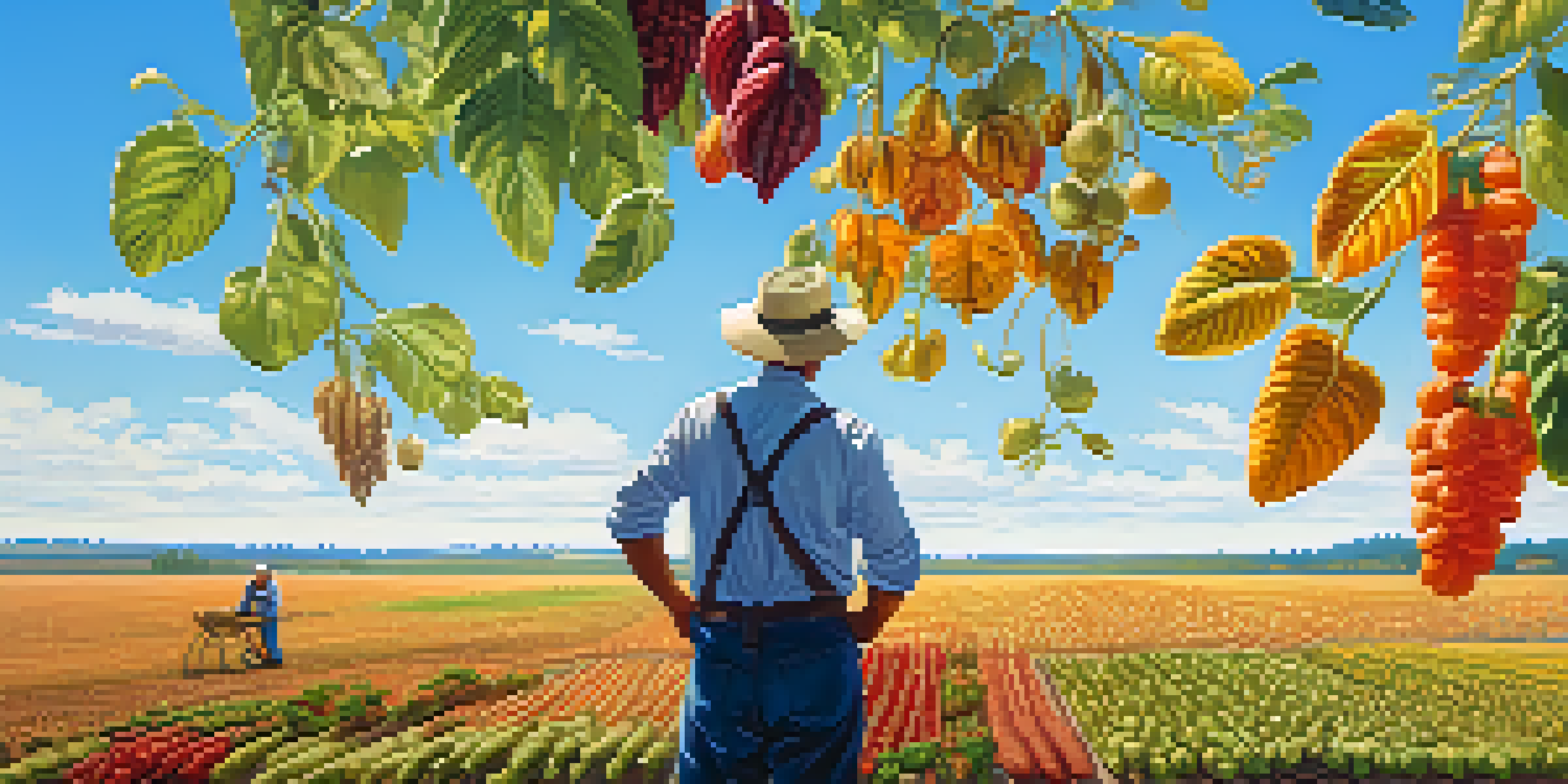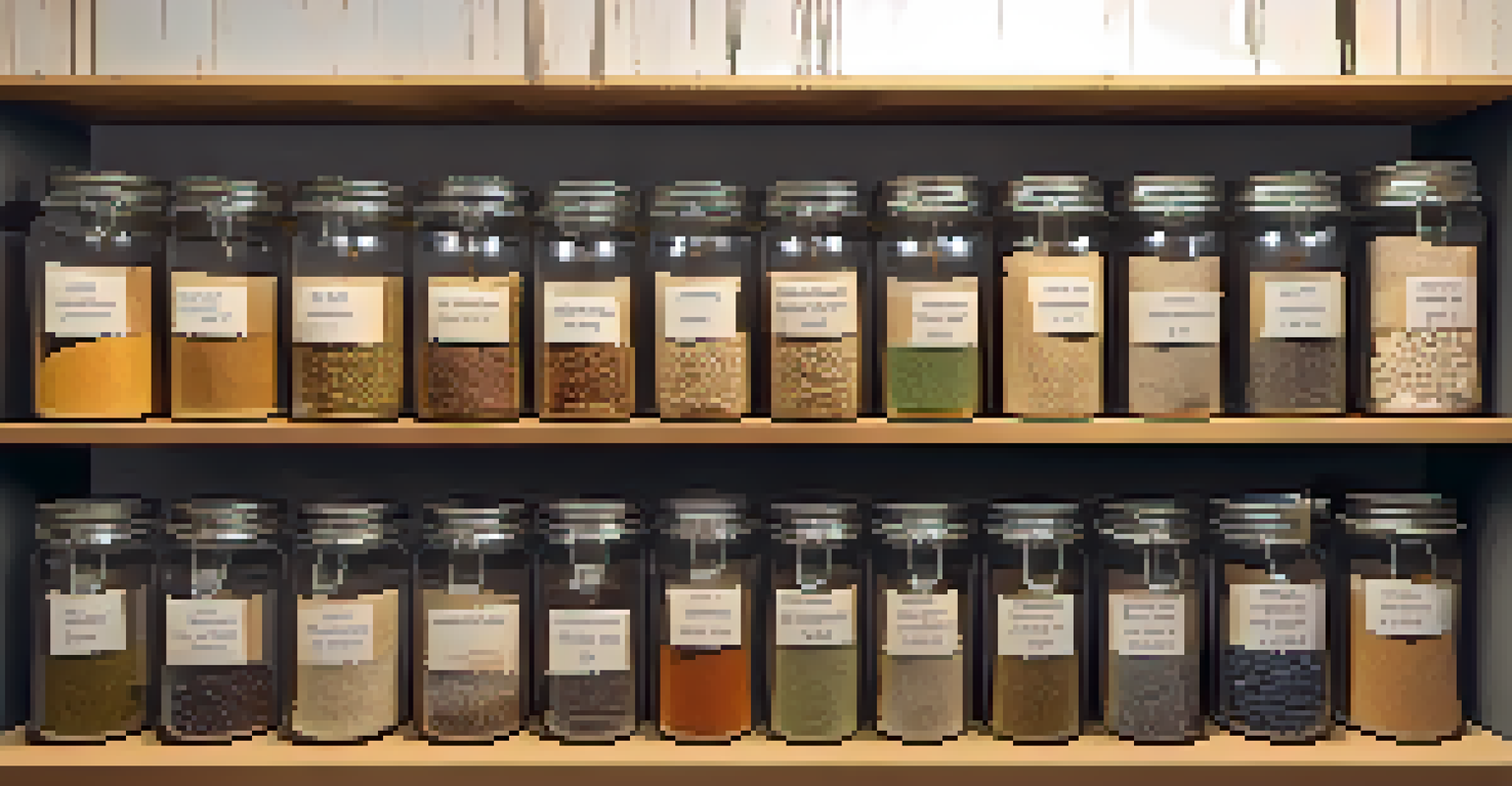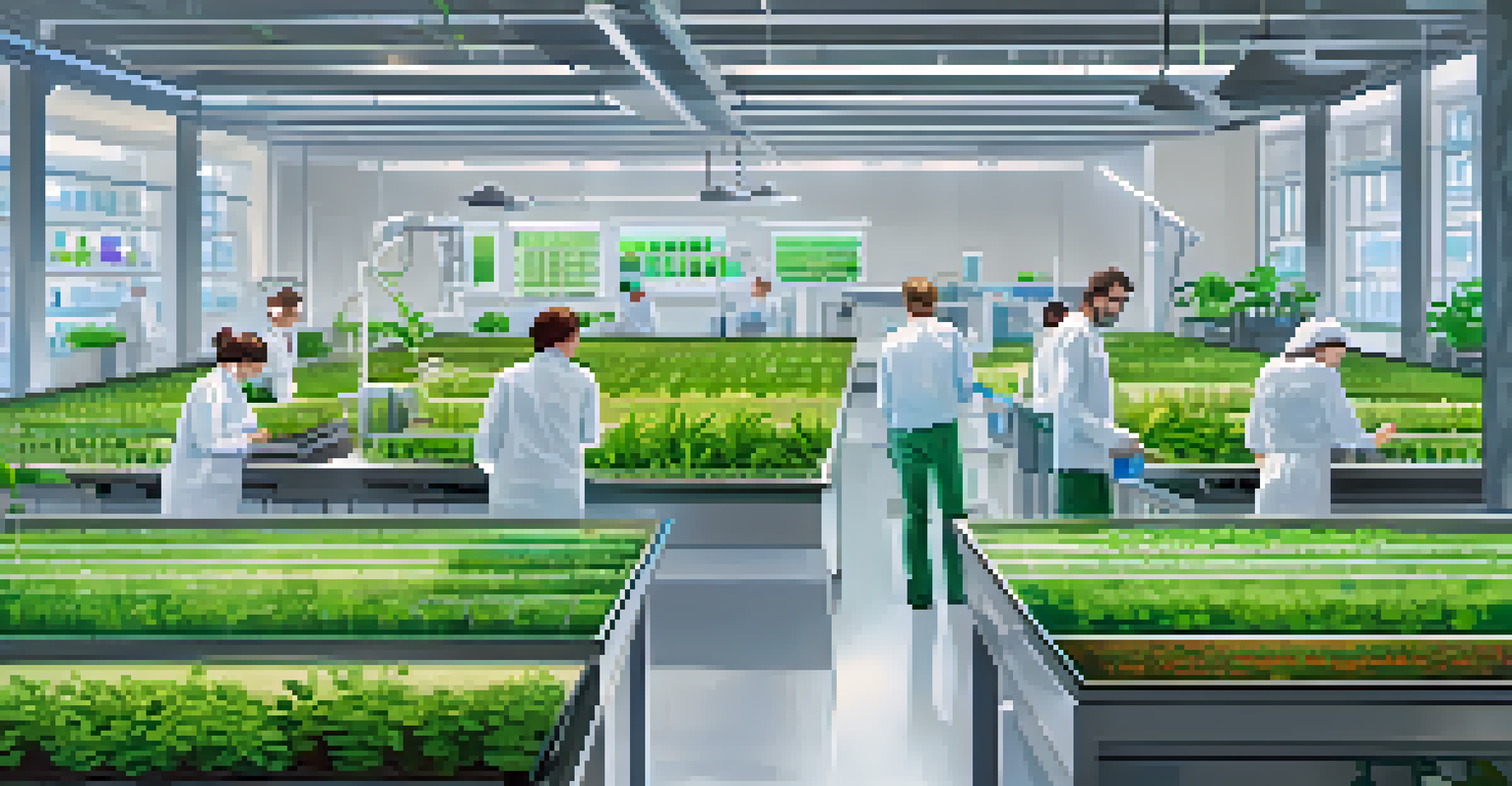Understanding Genetic Diversity for Resilient Plant Breeding

What is Genetic Diversity and Why Does It Matter?
Genetic diversity refers to the variety of genes within a species. This diversity is crucial because it allows plants to adapt to changing environments and resist diseases. Think of it like a toolbox; the more tools you have, the better equipped you are to handle various tasks. Without sufficient genetic diversity, plants may struggle to thrive amid pests, climate changes, or other challenges.
Genetic diversity is essential for adapting to environmental change.
For example, a crop with low genetic diversity might succumb to a new strain of disease that it hasn't encountered before. On the other hand, a genetically diverse crop can rely on its varied traits to withstand such threats. As agriculture faces increasing pressures from climate change and population growth, understanding and enhancing genetic diversity becomes vital for sustainable farming practices.
Ultimately, fostering genetic diversity isn't just about preserving plants; it's about ensuring our food systems remain resilient. In the face of uncertainty, a diverse genetic pool acts as a safety net, allowing farmers to cultivate crops that can weather various storms.
The Role of Genetic Diversity in Plant Breeding
Plant breeding is the science of developing new plant varieties with desired traits, such as higher yields or better disease resistance. Genetic diversity plays a key role in this process, as breeders rely on a wide range of genetic materials to create successful hybrids. Imagine a chef experimenting with different ingredients to create a unique dish; plant breeders do something similar with genes.

By incorporating diverse genetic traits, breeders can enhance the resilience of crops against environmental stresses. For instance, by crossing a drought-resistant variety with one that has high nutritional value, breeders can develop a new crop that thrives in arid conditions while also providing essential nutrients. This ability to combine traits is essential for meeting the demands of a growing population.
Genetic Diversity Enhances Resilience
A variety of genes within plant species allows for better adaptation to environmental changes and resistance to diseases.
Moreover, genetic diversity helps ensure that crops can adapt to ever-changing environmental conditions. As climates shift and new pests emerge, having a diverse genetic base allows for quicker responses and solutions in breeding programs. This adaptability is key for sustaining agriculture in the long run.
Methods for Enhancing Genetic Diversity in Crops
There are several methods that plant breeders use to enhance genetic diversity within crops. One common approach is to cross different varieties of the same species, known as hybridization. This process can introduce new traits and improve the overall resilience of the resulting plants, similar to how mixing different cultures can lead to a rich tapestry of traditions.
The loss of genetic diversity is one of the biggest threats to global food security.
Another technique is the use of wild relatives of cultivated crops. These plants often possess unique traits that have been lost in domesticated varieties due to selective breeding. By integrating these traits back into modern crops, breeders can enhance their genetic diversity and resilience. For example, some wild relatives of wheat are naturally resistant to certain diseases, making them valuable additions to breeding programs.
Additionally, advances in biotechnology, such as gene editing, offer new avenues for enhancing genetic diversity. These technologies allow breeders to introduce specific traits more precisely and efficiently, leading to crops that can better withstand environmental pressures. However, ethical considerations and public perceptions of these methods must be taken into account as they shape the future of plant breeding.
Challenges Facing Genetic Diversity in Agriculture
Despite the benefits of genetic diversity, there are significant challenges in maintaining and enhancing it in agriculture. One major issue is the trend towards monoculture, where farmers grow a single crop variety over large areas. This practice can lead to reduced genetic diversity, making crops more vulnerable to disease and pests, similar to putting all your eggs in one basket.
Moreover, climate change poses additional threats to genetic diversity. As weather patterns shift and extreme conditions become more frequent, certain crop varieties may struggle to adapt. This situation underscores the need for a diverse genetic base, as it provides options for breeding resilient varieties that can cope with new challenges.
Plant Breeding Relies on Diversity
Genetic diversity is essential for developing new plant varieties that can withstand challenges like climate change and pests.
Finally, economic pressures can also hinder efforts to promote genetic diversity. Many farmers may opt for high-yield, uniform varieties that promise immediate returns, at the expense of long-term sustainability. Encouraging a shift in mindset among agricultural stakeholders is essential for fostering a culture that values diversity and resilience.
The Importance of Conservation in Genetic Diversity
Conservation plays a crucial role in maintaining genetic diversity within plant species. By preserving a wide range of plant varieties and their wild relatives, we can provide breeders with the genetic resources needed to develop resilient crops. Think of conservation as a library; the more books it contains, the more information is available for future generations.
Institutions like seed banks are essential in this effort, as they store seeds from diverse plant varieties for future use. These banks act as safety nets, ensuring that even if certain varieties become extinct in the wild, their genetic material remains accessible for breeding programs. This preservation is vital for safeguarding food security and biodiversity.
Furthermore, community efforts, such as local seed saving initiatives, also contribute to conservation. By encouraging farmers to save and share seeds from diverse varieties, we can foster a culture of genetic diversity at the grassroots level. This collaboration not only protects our food systems but also strengthens local agricultural practices.
Case Studies Highlighting Genetic Diversity Success
There are several inspiring case studies that showcase the power of genetic diversity in plant breeding. One notable example is the development of disease-resistant cassava varieties in Africa. By utilizing genetic material from wild cassava species, scientists were able to create new varieties that withstand viral infections while maintaining high yields. This success story illustrates how tapping into genetic diversity can address pressing agricultural challenges.
Another example comes from the use of ancient grains like quinoa, which have gained popularity for their nutritional benefits. Breeders have successfully incorporated diverse genetic traits from various quinoa varieties, resulting in crops that are more resilient to climate change and pests. This not only helps farmers adapt to new conditions but also supports the broader goal of sustainable agriculture.
Conservation is Key for Future Crops
Preserving diverse plant varieties and their wild relatives is crucial for ensuring sustainable food systems and agricultural resilience.
These case studies remind us that genetic diversity is not just a theoretical concept; it's a practical tool for improving food security and agricultural resilience. By learning from these successes, we can continue to develop strategies that prioritize genetic diversity in plant breeding.
The Future of Genetic Diversity in Plant Breeding
Looking ahead, the future of genetic diversity in plant breeding appears promising yet challenging. As technology continues to evolve, breeders will have access to more sophisticated tools for enhancing genetic diversity. Techniques such as genomic selection and advanced breeding methods will enable faster and more precise development of resilient crop varieties.
However, it is crucial to balance technological advancements with traditional breeding practices and conservation efforts. Emphasizing the importance of both approaches will help ensure that we maintain a rich genetic pool while also meeting the demands of modern agriculture. It’s like having a toolbox filled with both high-tech gadgets and trusty old tools; each serves a purpose.

Ultimately, fostering genetic diversity is a shared responsibility that requires collaboration among scientists, farmers, policymakers, and communities. By working together, we can build a resilient agricultural system that thrives on diversity, ensuring food security for generations to come.